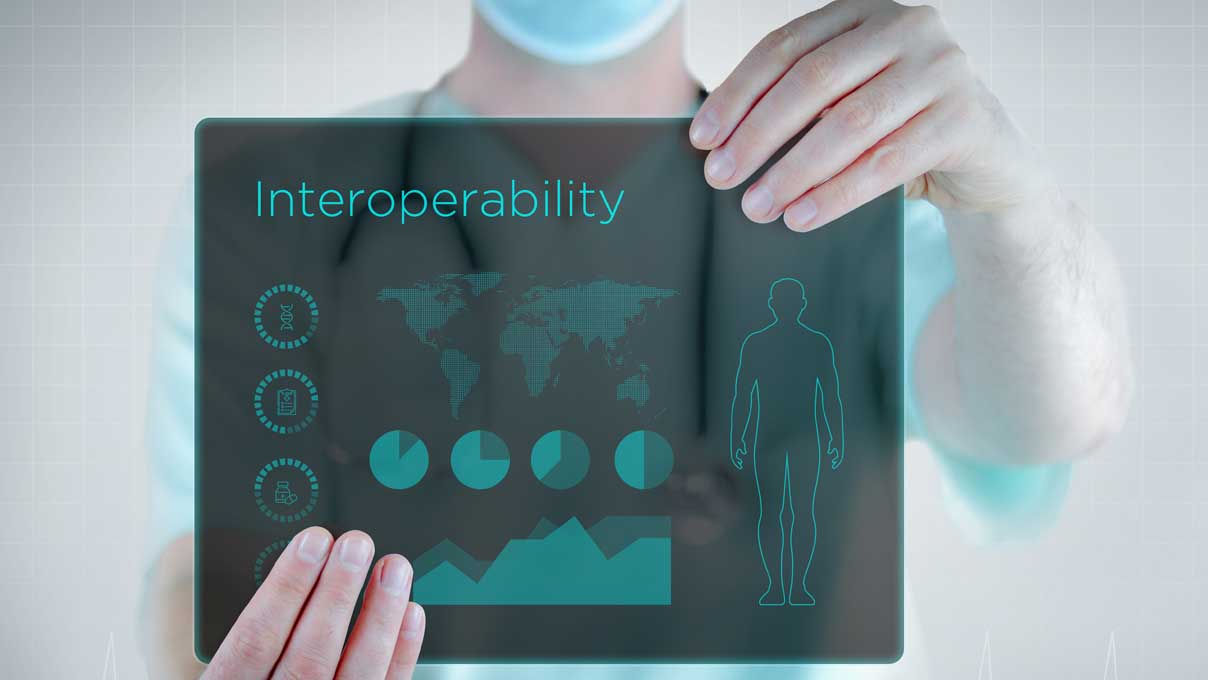
Driving Interoperability and Seamless Connections in Healthcare Technology
March 1, 2024
Healthcare technology systems are riddled with complexities that, when integrated poorly, lead to inefficiencies. Rarely do these inefficiencies sprout up overnight, but develop slowly over time:
- Adopting new point solutions to close functionality gaps, creating a fragmented experience for employees and patients
- Adding new integrations without considering the broader workflow
- Implementing technology changes in isolated instances, which when improperly managed cause problems for the system as a whole
The problem with integration sprawl across healthcare technology
There are a multitude of data standards across healthcare organizations, many of them serving similar needs. To ensure consistency and accuracy, these protocols must achieve some level of integration. Unfortunately, the common approach is for technology providers (or in-house staff) to build new integrations for each protocol, without considering the larger workflow and the purpose behind the integration. Often, this approach results in the following issues:- Old, outdated interfaces
- Build by a single engineer or small team, which creates a single point of failure
- Lack of error handling
- One load failure breaks other processes and effects adjacent processes
High operational costs
Data integrations are expensive to build, whether you’re building them yourself or contracting with an outside developer. If you have to build new integrations for every new function that arises, those costs can add up quickly. But operational costs don’t just arise from building the technology, but maintaining the technical resources necessary to protect the operation of these systems. For example, forced integrations for non-interoperable solutions are technically heavy to maintain, adding costs and risks.Fragmented experiences for employees and patients
In conversations surrounding integrations, what’s often said is: “We’re going to be able to pass data back and forth between systems.” What often goes unsaid is: “To do that, we need to implement a whole new system and get employees to use it.” Often, extensive integrations arise because you’re just constantly implementing new solutions and workflows. This drives a fragmented experience for employees, patients, and everyone else in your healthcare ecosystem, which in turn drives dissatisfaction and frustration.Distraction from mission critical tasks
Across all healthcare functions, people are desperate for efficiency. Complex and inefficient systems, however, distract staff from mission critical tasks like caring for patients and helping doctors deliver care.Technology & infrastructure brain drain
When you’ve gerry-rigged an array of solutions to support your healthcare organization, there are nuances and quirks of that system that few in the organization understand completely. This means that when individual administrators leave the organization, despite best efforts to retain information, a brain drain occurs. This status quo is too risky and expensive to ignore. To mitigate risks and protect your healthcare organization, you need to adopt a new approach to your clinical data management practices.The need for true interoperability in clinical data management
True interoperability doesn’t just look for new ways to integrate data. Instead, it should consider the entire workflow and how new or updated integrations impact the system as a whole. This requires evaluating new and existing integrations in the context of the actions a person, system, or solution takes throughout the process. It also requires taking into account all the variables associated with the workflow and experience of employees and patients, using those insights to decide how best to set up your integrations. This approach runs contrary to how many in the technical world think about data. More often than not, the emphasis is only on ensuring the data flows properly and not on how it will drive better outcomes for everyone.But if you’re going to undertake a certain scope of work, it makes sense to consider what actually improves the situation, rather than adding additional layers of administrative minutiae for employees.For example, many healthcare organizations face the risk of double documentation with patient data. To solve it, they’ll implement an RPA to pull data from one system to another. The purpose behind this isn’t the integration for its own sake—but to save the employee from pulling in that data manually, which frees them up for other tasks.
Benefits of clinical data interoperability and seamless connections
There are a number of benefits that arise from this approach, many of which align with broader strategies to improve healthcare delivery, optimize operations, and comply with regulations. These include:- Operational efficiency. By focusing on the workflow as a whole, you can drive greater efficiency across the organization, solving problems rather than causing new ones.
- Cost savings. By identifying inefficiencies and eliminating them, you can reduce your operational costs. Additionally, more intuitive systems require less effort to train and retrain staff.
- Regulatory compliance and risk mitigation. The more seamlessly your clinical data is managed, the easier it is to maintain compliance. For example, if a point solution breaks, it can cause security challenges that put patient data at risk. A holistic approach to your infrastructure can help prevent this from happening.
- Innovation and technological advancements. When your focus isn’t on simply maintaining operations, you can devote your time to greater innovation within your technological infrastructure.
- Inter-organizational collaboration. For large health systems, greater efficiency across departments can drive greater collaborations that can lead to better patient outcomes.
- Long-term scalability & adaptability. As the healthcare sector continues to evolve, this holistic approach can provide a solid foundation for future scalability and adaptability as external factors and the nature of your patient population change.
Final thoughts on driving interoperability & seamless connections in healthcare technology
For interoperability to drive value within your healthcare organization, your focus must be on outcomes, not building and shipping features. This requires a level of understanding of how your technological infrastructure interfaces with employees, partners, and patients that isn’t immediately obvious to most developers. Instead, it requires a technology partner with experience analyzing intended outcomes through person-centered design thinking, and only then determining which features and integrations are necessary to drive those outcomes. 3Pillar Global’s Product Mindset involves minimizing time to value, solving for need, and excelling at change. We have the experience—both within healthcare and other industries—of solving the challenges inherent in complex, extensive technological systems. Learn more about 3Pillar Global’s healthcare expertise and how we can help.About the Author

BY
SHARE
Recent blog posts

Stay in Touch
Keep your competitive edge – subscribe to our newsletter for updates on emerging software engineering, data and AI, and cloud technology trends.
Thank you for submitting the form



